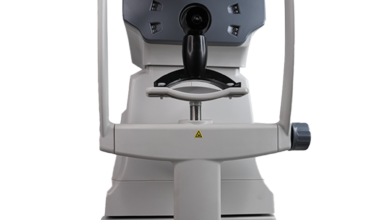
Supply chain auditing is a critical process that evaluates the efficiency, compliance, and integrity of supply chain operations within organizations. With the increasing complexity and globalized nature of supply chains, auditing plays a pivotal role in ensuring transparency, mitigating risks, and maintaining ethical practices. Companies face mounting pressure to demonstrate responsible and sustainable supply chain management in today’s business landscape. This article explores one emerging trend in supply chain auditing: technology integration. We will delve into the importance and evolution of supply chain auditing practices, examine the benefits and challenges of adopting technology, analyze case studies showcasing successful technology-driven audits, discuss best practices for implementation, and highlight future considerations for supply chain auditing in an increasingly digital world.
1.Introduction to Supply Chain Auditing
– Defining supply chain auditing
Supply chain auditing examines and evaluates the various components of a supply chain system to ensure compliance with regulations, ethical practices, and operational efficiency. It involves inspecting the flow of goods, information, and finances across different stages of the supply chain, from raw material sourcing to the delivery of the final product.
– Importance of supply chain auditing
Supply chain auditing plays a crucial role in today’s business landscape. It helps organizations maintain transparency, mitigate risks, and ensure compliance with regulations. By conducting regular audits, companies can gain insights into their supply chain operations, identify areas for improvement, and build trust with stakeholders, including customers, investors, and regulatory bodies.
2.Importance of supply chain auditing in today’s business landscape
– Ensuring transparency and ethical practices
Supply chain auditing promotes transparency by assessing whether suppliers and partners adhere to ethical business practices, such as fair labor conditions, environmental sustainability, and responsible sourcing. By ensuring transparency throughout the supply chain, companies can build strong brand reputations and meet the increasing demand for socially conscious products and services.
– Mitigating operational and reputational risks
Through supply chain auditing, organizations can identify potential risks and vulnerabilities in their supply chains, such as disruptions, quality issues, or unethical practices by suppliers. By proactively addressing these risks, companies can minimize the chances of operational disruptions, maintain product quality, and protect their reputation from negative publicity.
– Meeting regulatory compliance
Supply chain auditing is essential for meeting regulatory requirements imposed by local and international authorities. It helps businesses ensure compliance with laws and industry standards, such as labor laws, safety regulations, data privacy regulations, and product quality standards. Companies can identify non-compliance issues, implement corrective measures, and avoid legal and financial penalties by conducting audits.
3.Evolution of supply chain auditing practices
– Traditional methods of supply chain auditing
Traditionally, supply chain auditing involved manual inspections, on-site visits, and paper-based documentation. Auditors would physically visit suppliers and partners to assess their operations, collect data, and verify compliance. These methods, while effective to some extent, were time-consuming, expensive, and often limited in scope.
– Limitations and drawbacks of traditional methods
Traditional supply chain auditing methods have several limitations. They lacked real-time insights and relied heavily on subjective assessments. Additionally, manual data collection and analysis were prone to errors and inconsistencies. The scope of audits was often limited to a small sample size, making it challenging to identify systemic issues or trends across the supply chain.
– Shifting focus towards a holistic approach
In recent years, there has been a shift towards a more holistic approach to supply chain auditing. This approach involves utilizing technology, data analytics, and automation to improve audits’ accuracy, efficiency, and comprehensiveness. By leveraging advanced tools and techniques, companies can conduct audits on a larger scale, monitor their supply chains in real time, and gain deeper insights into their operations.
4.Emerging trend in supply chain auditing: Technology integration
– The role of technology in enhancing supply chain audits
Technology integration is an emerging trend in supply chain auditing. It involves using software applications, digital platforms, and IoT devices to streamline auditing processes, capture real-time data, and automate data analysis. These technological advancements enable auditors to conduct more frequent and comprehensive audits, improving the accuracy and efficiency of the auditing process.
– Leveraging data analytics for improved auditing processes
One significant aspect of technology integration is the use of data analytics. By analyzing large volumes of data collected from various sources in the supply chain, companies can identify patterns, detect anomalies, and assess performance metrics. This data-driven approach to auditing allows for proactive risk management, predictive insights, and continuous improvement in supply chain operations.
5.Benefits and challenges of implementing technology in supply chain auditing
When it comes to supply chain auditing, technology has become a game-changer. By incorporating advanced tools and systems, businesses can experience a variety of benefits while also facing a few challenges along the way.
– Increased efficiency and accuracy in auditing
Gone are the days of manually sifting through piles of paperwork and spreadsheets. Technology streamlines the auditing process, automating tasks and reducing the risk of human error. Auditors can access real-time data with just a few clicks, ensuring accuracy and efficiency like never before.
– Enhanced visibility and traceability of the supply chain
Technology opens up a window into the intricate web of supply chains. With digital platforms and tracking systems, businesses can gain visibility at every stage, from sourcing to delivery. This increased transparency allows for better monitoring, identification of bottlenecks, and timely interventions to optimize the supply chain.
– Addressing data security and privacy concerns
While embracing technology offers numerous advantages, it raises data security and privacy concerns. Supply chain audits deal with sensitive information, and it is crucial to adopt robust cybersecurity measures. Businesses must prioritize safeguarding data and ensure compliance with privacy regulations to maintain trust and confidence in their auditing processes.
6.Case studies showcasing successful technology-driven supply chain audits
Real-world examples demonstrate how technology-driven supply chain audits can revolutionize a company’s operations.
– Company A: Leveraging blockchain for supply chain transparency
Company A enhanced transparency and traceability across its supply chain by utilizing blockchain technology. Every product transaction and movement was recorded, making an immutable ledger accessible to auditors. This increased trust and allowed for swift identification of any irregularities or inefficiencies in the supply chain.
– Company B: Implementing IoT devices for real-time monitoring
Company B embraced the Internet of Things (IoT) to monitor various aspects of its supply chain. IoT devices provided real-time data on temperature, humidity, and location, ensuring compliance with quality standards and adherence to delivery schedules. Auditors could track and analyze these metrics, identifying areas for improvement and enhancing overall efficiency.
7. Best practices for adopting and maximizing the use of technology in supply chain auditing
While technology offers tremendous potential, it is essential to follow best practices to capitalize on its benefits fully.
– Conducting a comprehensive technology needs assessment
Before implementing any technology, businesses should evaluate their specific requirements and conduct a thorough assessment. Identifying key pain points and desired outcomes will help determine the most suitable solutions for the supply chain auditing process.
– Ensuring proper integration and data compatibility
Integrating new technology seamlessly into existing systems is crucial. It is vital to ensure compatibility between different platforms and data sources to avoid disruptions, data loss, or inconsistencies. Proper integration enables a smooth transition and optimal utilization of technology in auditing practices.
– Training and upskilling auditors for technological advancements
Equipping auditors with the necessary skills and knowledge to navigate technology is essential. Businesses should invest in comprehensive training programs to ensure auditors can effectively operate the new tools and leverage their capabilities thoroughly. Regular upskilling and staying abreast of technological advancements are essential to maximize the potential of technology in supply chain auditing.
8. Future outlook and considerations for supply chain auditing in an increasingly digital world
As technology evolves, it is essential to consider the future implications for supply chain auditing.
– Embracing emerging technologies like AI and machine learning
Artificial intelligence (AI) and machine learning (ML) present exciting opportunities for supply chain auditing. These technologies can analyze vast amounts of data, identify patterns, and predict potential risks or inefficiencies. By embracing AI and ML, businesses can take their auditing practices to the next level, enabling proactive decision-making and continuous improvement.
– Addressing ethical and social implications of technology integration
While technology offers immense potential, it also raises ethical and social considerations. Businesses must be mindful of the impact of technology on employees, communities, and the environment. Integrating technology responsibly and ethically should be a priority to ensure fairness, sustainability, and positive social outcomes in supply chain auditing.
Conclusion
In conclusion, integrating technology in supply chain auditing is a significant trend that promises to enhance transparency, efficiency, and risk mitigation in supply chain operations. As companies strive to meet regulatory requirements, maintain ethical practices, and gain a competitive edge, leveraging technology becomes increasingly vital. However, it is crucial to carefully consider the challenges and ensure proper implementation to maximize the benefits of technology integration. By adopting best practices and staying ahead of emerging technologies, organizations can optimize their supply chain audits and pave the way for a more transparent and resilient future in supply chain management.




